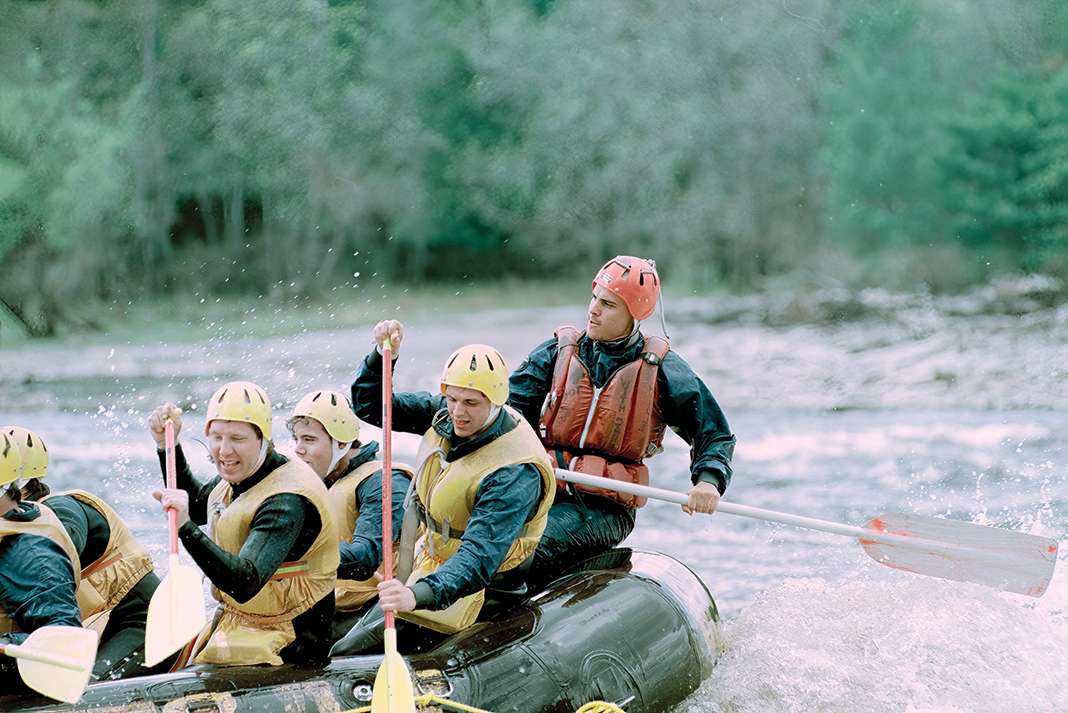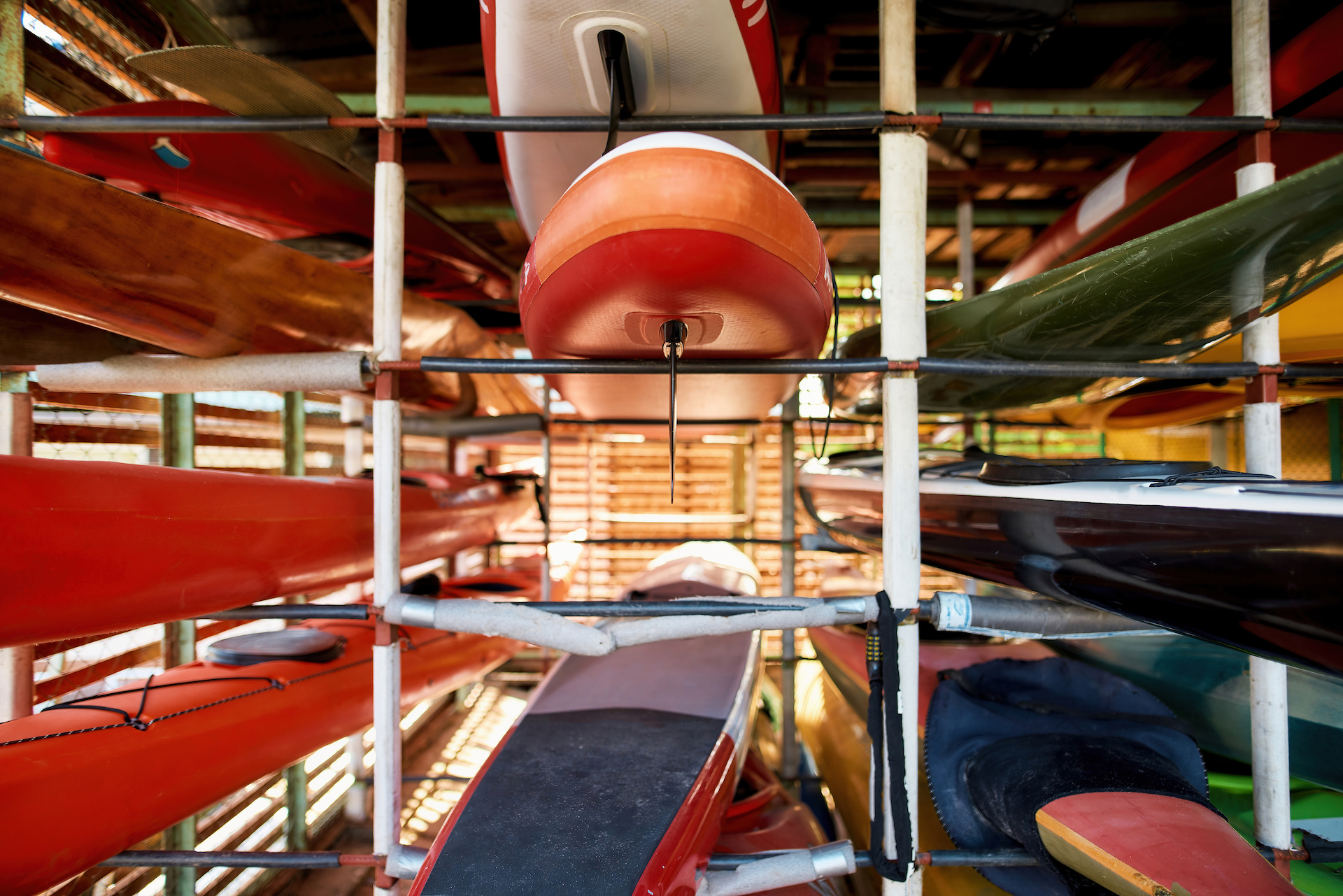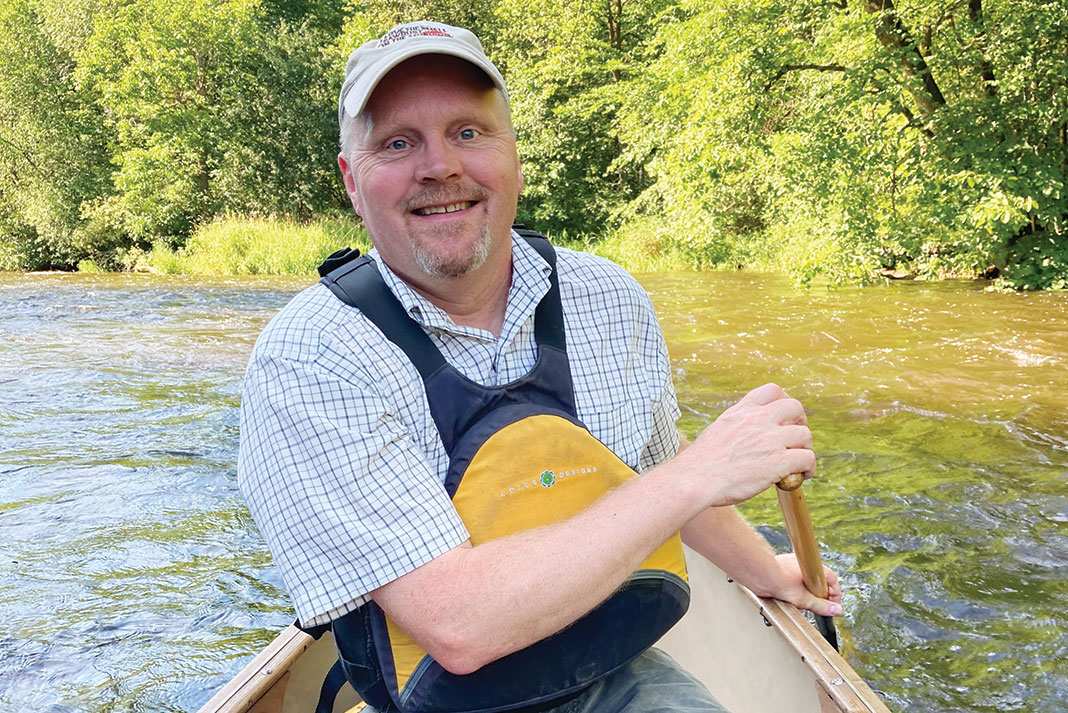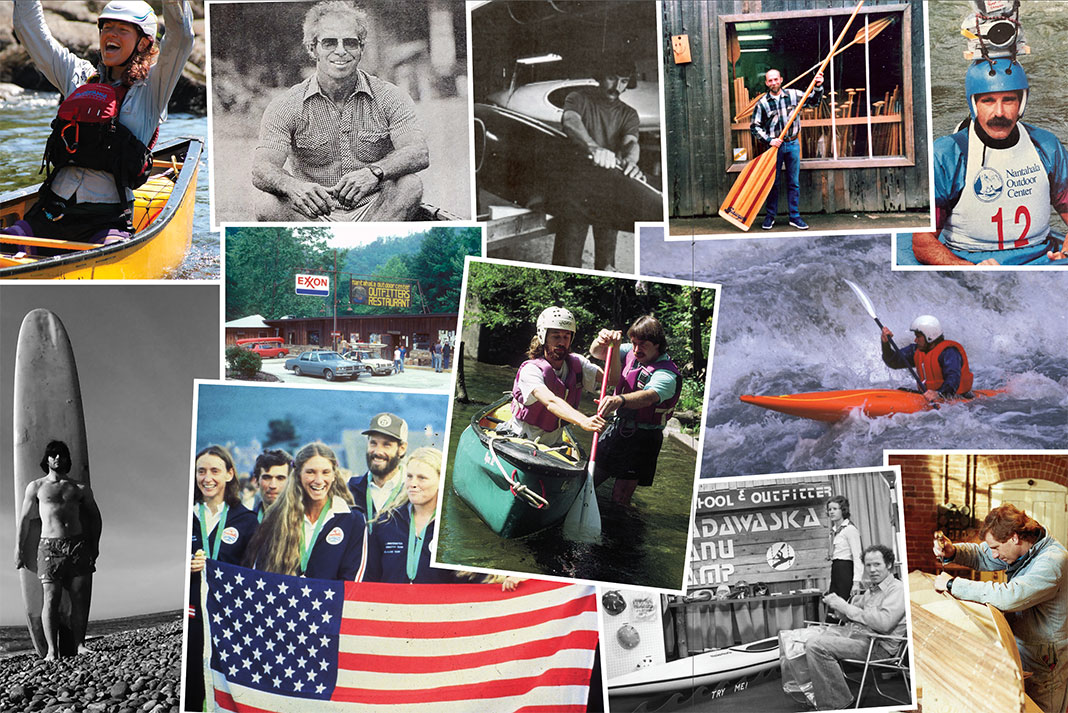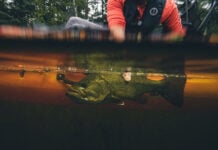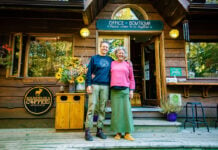If Yogi Berra were still alive to describe the paddlesports leadership summit that gave us the new Paddlesports Trade Coalition, he might have said it was déjà vu all over again.
Building the coalition: Arkansas summit births new national trade association
The meeting brought leaders from 30 paddlesports manufacturers together in Bentonville, Arkansas this past January. As the group began discussing the industry’s needs and goals the first day, Kokatat Sales Director Jeff Turner turned to Stig Larsson, founder of Level Six. Both had been involved in a stalled effort to create a national paddlesports trade organization six years ago, and Turner wanted to know if Larsson still had the vision statement on his laptop. Larsson quickly found the document and cast it on the screen.
“Suddenly the room was quiet and people were reading through this old mission statement about the core benefits of working together as an industry,” recalls Lili Colby, product to market coordinator at Mustang Survival and chair of the new trade organization’s interim board. “That document became the foundation of our mission statement, and now the statement of purpose in our bylaws.” They even kept the name, the Paddlesports Trade Coalition.
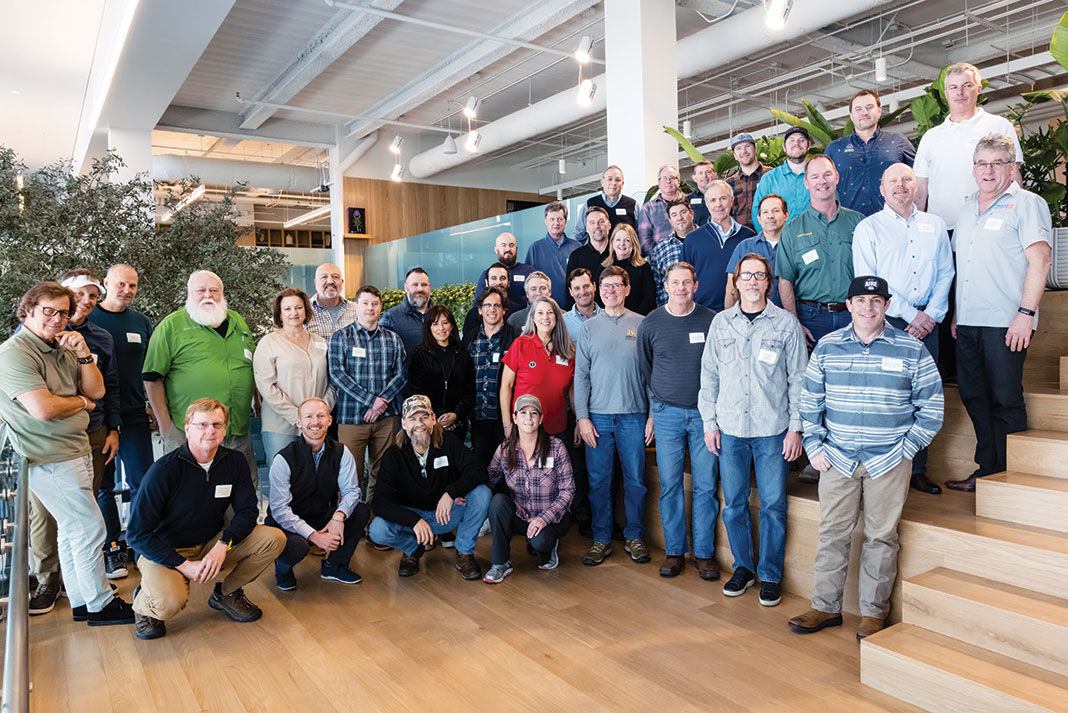
The moment revealed a lot about the paddling business. It showed two friends can set aside a fierce business rivalry to find common solutions to issues affecting everyone in the industry. And, just as revealing, it showed those problems haven’t changed in the better part of a decade.
All that morning, 42 executives representing 30 manufacturers had gathered in breakout teams, recording the industry’s core needs on sticky notes. When they took a step back, Turner says, “We found all the notes pasted on the wall could be organized into three or four key buckets, which actually served the mission statement that had been written six years ago.”
Priorites included working together to make the sport more accessible and inviting, and to monitor and engage in federal and state legislation affecting paddlesports. There was talk of real cooperation on sales data, electronic ordering tools, standardized preseason schedules, and perhaps even shared shipping. The need for a trade show by and for paddlesports—or at least one better serving the industry’s needs—was near the top of everyone’s list. And when Turner asked for a vote about whether to form a trade association, the response was instantaneous.
“We basically had a hands-up vote and it was unanimous with lots of cheers that we wanted to form this organization,” Turner says. “Then I asked who wants to be involved in the steering committee, and probably a dozen more hands shot up.”
The volunteers then set about the steady work of creating a national organization from the ground up. A core group has been meeting weekly on Zoom, and in June the group named an 11-member interim board with Colby as chair, Scott Holley of Eddyline as vice chair and Turner as interim executive director.
The nascent Paddlesports Trade Coalition has partnered with established organizations to help bring it up to speed, notably the National Association of State Boating Law Administrators (NASBLA), a nonprofit serving state agencies in charge of conservation and law enforcement on state waterways. While the match may at first seem like a case of strange bedfellows, NASBLA has long provided association management services to other nonprofits and has shared interests with paddlesports, particularly around public access and safety. And they were a known quantity: NASBLA served a similar role as an incubator for the Life Jacket Association, working with Colby and other Bentonville attendees who are in the life jacket game.
NASBLA has provided staff support, notably Pam Dillon, an experienced administrator who served as executive director of the American Canoe Association in the early aughts, and in-house counsel Kaci Christopher, who has been instrumental in drawing up organizational bylaws and obtaining 501(c)6 tax-exempt status for the reborn PTC. Says Colby, “This isn’t just kumbaya around the campfire. The goal is to be a professional trade association that is going to benefit the consumer and the industry in a real way.”
The industry hasn’t had a formal trade association since the Paddlesports Industry Association faded away more than a decade ago.
The group also relied on the hospitality of Visit Bentonville and The Runway Group, a minority investor in Eddyline owned by third-generation Walmart heirs Steuart and Tom Walton. The group has no connection to the mega-retailer other than the family relation and shared roots in Northwest Arkansas. The Runway Group is heavily invested in making Bentonville into an outdoor sports and business hub, and hosting the paddlesports leadership summit fit that bill.
“They said any time you want to throw an industry get together, we’ll roll out the red carpet,” Holley says. “We got hundreds of hours of free work and support in addition to venues, activities, food and everything else. It just couldn’t have happened without that.”
Visit Bentonville and The Runway Group already have committed to hosting a second, larger summit January 24–25, 2024, which will include retailers, liveries, sales reps, media and others. Holley expects about 150 attendees and a lively conversation as retailers voice their ideas and concerns.
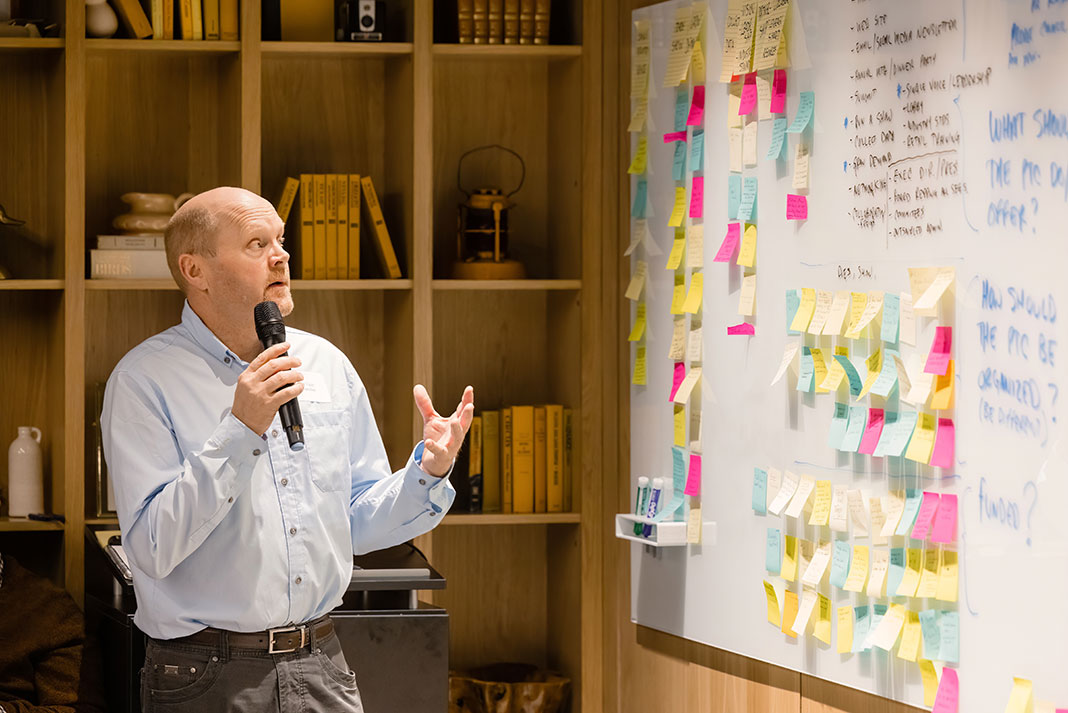
For many retailers, the first question will be why they weren’t invited the first time. Dave Lindo, owner of OKC Kayak in Oklahoma City, sums up the mood. “If you’re going to have a forming committee and say you’re representing all these interest groups, maybe you should have had some retailers on the committee that’s putting this thing together,” he says.
Holley says organizers thought a smaller meeting would be more productive, and they chose not to invite press or retailers so that participants could speak candidly. They succeeded on both counts but now, in the immortal words of Ricky Ricardo, they’ve got some ‘splaining to do.
“There’s always a yin and a yang between retailers and brands and we’ve got to figure out the bridge. We’ve got to get over this chasm and start working together,” Turner says.
The bridge building will begin in earnest this fall with a membership drive aimed at retailers and extending into every corner of the industry. The PTC defines paddlesports to include all modes of human and electric-powered personal watercraft including canoes and kayaks as well as SUP, pedal drives and the growing electric-drive powered personal watercraft.
The group also is looking to bring more brands into the fold, including some big players who didn’t get the memo the first time around. Take Pelican/Confluence, the biggest kayak manufacturer in the world. Organizers extended invites to two Pelican executives and received no response. Then, when the press release went out after the meeting, a third Pelican executive reached out asking to be included.
The miscue points to the reason paddlesports needs an effective trade organization. When Holley and retired Branches president Ed Vater began emailing paddlesports leaders to join the summit, they started with a six-year-old mailing list because no one had compiled a more recent one—that’s what industry associations do, and paddlesports didn’t have one. Adds Holley, “We weren’t really doing a hard sell. This was not pitched as the inaugural event of an official trade association. That was an outcome of the summit but not a goal when we went into it.”
Holley is confident Pelican will join the coalition, which already includes a broad center of influential brands. Hobie, NRS and Johnson Outdoors are all represented on the interim board. Pelican, too, wants a seat. Smaller companies also are on the board, including rafting specialist Down River Equipment, adaptive paddle company Angle Oar and black-owned startup Bluemonic. A robust website launched in August at paddlesportstradecoalition.org and will soon include tools for processing membership applications and meeting registrations.
Also this summer organizers began passing the hat for seed money. “Everyone in Bentonville said that they would contribute financially to the organization, so we’ve sent an email out saying we’re doing it. We’ve established a 501(c)6 and we’re asking for money from what we’re calling the founders,” Colby says. As of press time, 19 brands had answered the call.
The dues schedule has yet to be finalized, but Turner says it will follow a tiered structure based on member companies’ annual revenue. “We’ll have an associate membership, which is essentially a non-voting membership, and then we’ll have voting members who will pay a little more,” Turner says. The goal is to keep membership affordable, particularly for smaller companies.
What’s old is new again
Forming a paddling trade organization isn’t exactly a novel idea. At least seven of them have come and gone since the Trade Association of Sea Kayaking (TASK) was born in Werner Furrer’s basement in 1981 or 1982 (see timeline, below), but the industry hasn’t had a formal association encompassing retailers, brands and outfitters since the Paddlesports Industry Association faded away more than a decade ago.
Turner traces the origins of the new PTC to the 2016 Paddle Expo show in Germany, where a handful of industry movers began to talk seriously about the need for an industry association.
That November, Outdoor Retailer announced its Summer Market show dates would move from August to mid-June, marking a decisive end to the longstanding tug-of-war over outdoor trade show scheduling. After digging in their collective heels to defend an August show, paddlesports companies had been pulled straight through the mud pit, all the way to June.
There was a sense at the time that paddlesports needed a trade show of its own in North America, and the Paddlesports Retailer (PSR) show came together in a flurry to meet it. One of the first calls PSR cofounder Sutton Bacon made was to Wenonah Canoe Vice President Bill Kueper, who happened to be in Asia at the time—meaning his phone rang in the middle of the night. Kueper pledged his support for the new show and went back to bed, thinking PSR would debut a year and a half later, in 2018. Reading the press release the next morning, he realized Bacon and cofounder Darren Bush planned a 2017 launch. The countdown was on.
That call came in November 2016. By January, Kueper was announced as chairman of the new Paddlesports Trade Coalition, heading an advisory council including Turner, Sue Rechner of Confluence Outdoor and David Blue from NRS. The first PSR debuted eight months later in Madison, Wisconsin, and two more shows followed in Oklahoma City.
For a while, there was the sense that paddling had finally found a home of its own. “That show was a true rallying cry for the industry, and I think the general sentiment that came out of Oklahoma City was, ‘We can do this!’” Turner says.
To Vater, PSR was an example of what the industry can do when it works together. “There was a lot of energy and Paddlesports Retailer in my mind started out very successfully because I personally called every dealer I could to get them to come. So did Stig, and so did Jeff [Turner], and so did David [Blue],” he says.
Brands agreed to a booth tax to subsidize retailers to attend the show and support the new trade group. “The idea was that money would spray back to the organization and allow us to do the legal work to be an official non-profit,” Vater says, but neither the economics of the show or the organization of the trade group came together as expected.
“We were really just six guys who were in the paddlesports business and wanted to collaborate. We never really committed ourselves to doing the governance work,” Turner says.
Then came Covid, further fracturing the trade show landscape while at the same time reinforcing just how important personal relationships are in the paddlesports business.
“One of the silver linings of the Pandemic has been a really visceral awareness that we like to work together face-to-face,” Colby says. “A virtual trade show doesn’t give the same inspiration.”
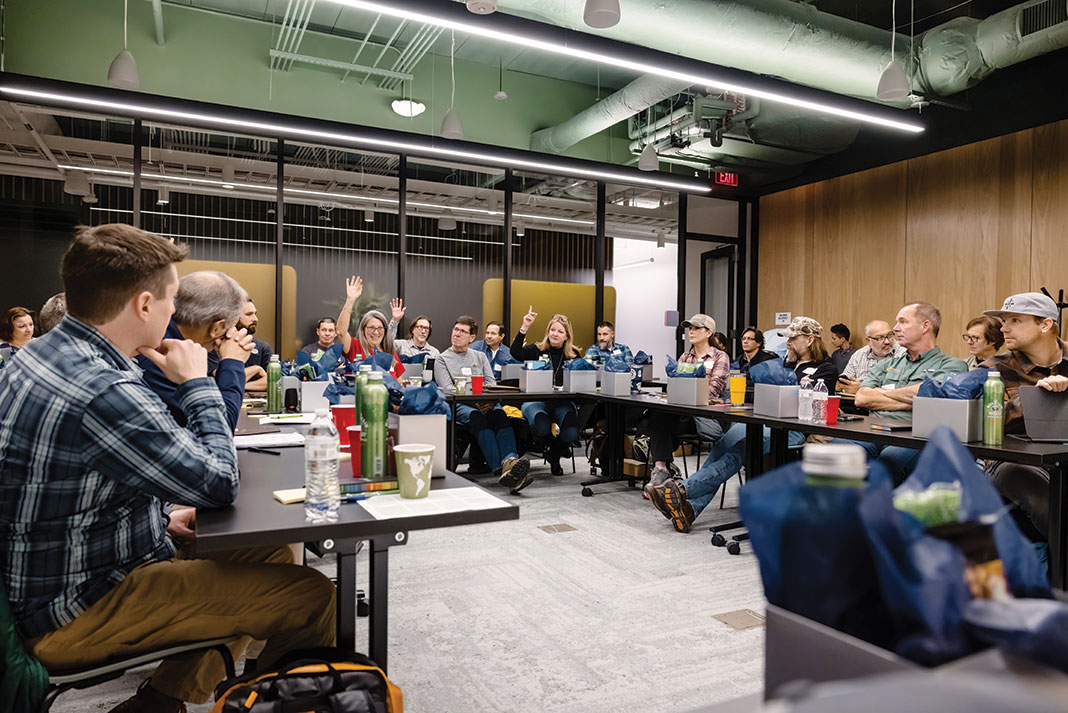
When industry leaders came together in Bentonville in January 2023, the need for a trade show that better serves paddlesports was on everyone’s lips. And even though PSR had been discontinued after three years and the trade association attached to it failed to take flight, attendees generally agreed the arrangement had promise—with one big caveat.
“What we found out is that when somebody else owns the show, the trade organization doesn’t have any power,” Vater says. On the other hand, an association that could rally paddlesports to a given show would have a great deal of influence. That’s a role the new PTC is looking to step into.
The trade show question will be one of the first agenda items at the next PTC meeting in Bentonville this coming January.
“We’re going to solicit the opinions and inputs of brands and retailers so we can approach it with data,” Holley says. “That could look like a lot of things. It could be working with an existing show group to come up with a show that everyone in the industry gets behind. It could be us creating a national show from the ground up on our own. Or it could be that we come up with a completely different format that folks get behind instead of a national show.”
A delegation from the new PTC met with America Outdoors in July and has made informal overtures to other trade show companies, including 360 Adventure Collective, Outdoor Retailer and Lost Paddle Events, organizers of the old Paddlesports Retailer and the current Big Gear Show.
“We’re having a lot of conversations with paddlesports industry leaders about providing some industry-specific solutions for paddlesports,” confirms Lost Paddle chief Bacon.
“I’m really encouraged about the formation of the PTC and the ability for the industry to communicate in one voice and support the initiatives that matter,” Bacon says. “I think we all agree that the paddlesports industry needs to convene as an industry in an annual gathering, and the success of any trade show or event is dependent on the support of the industry.”
Whether brands and retailers will have the appetite or the wherewithal to back a new show in this leanest of years is another question. That will be the next test, for both the new PTC and whatever trade show it may lead the industry to. And that, Vater says, will take a little faith.
“If we want this industry to thrive, we can’t just sit in our little factory somewhere and say ‘What’s in it for me?’” he says. “It’s the same with a trade show. Bottom line, coming together as an industry and taking the long view is priceless. But it takes everybody to work together to make that happen.”
A brief history of paddlesports trade organizations
The Paddlesports Trade Coalition isn’t the first paddling industry group in North America. In fact, it’s not even the first Paddlesports Trade Coalition. To catch you up to speed we offer this brief history.

Trade Association of Sea Kayaking
Circa 1981–1990
Paddling’s first modern trade organization began with a small gathering in Werner Furrer’s basement sometime in 1981 or 1982. There, amid the kayak molds, prototype paddles and vats of resin, a group of now legendary figures formed the Trade Association of Sea Kayaking (TASK). “That was when we realized that we could be an industry rather than a bunch of guys in their backyards,” said Brian Henry of Ocean River Sports, who was present at the meeting with Furrer, John Dowd, Eddyline founder Tom Derrer, and others. Among other things, the group agreed boat pricing should include a healthy margin for builders, retailers and, eventually, distributors. As its geographic footprint grew and it embraced other paddling disciplines, TASK rebranded as the Trade Association of Paddlesports (TAPS).
America Outdoors Association
Circa 1989–present
In 1989, the Eastern Professional River Outfitters Association and the Western River Guides Association (WRGA) joined forces as the America Outdoors Association. The new name reflected the organization’s ambition to grow beyond canoe and rafting outfitters to encompass all outdoor companies. Though its members now run the gamut from mountain bike tour operators to dude ranches, paddlesports has been the group’s center of gravity for 34 years.
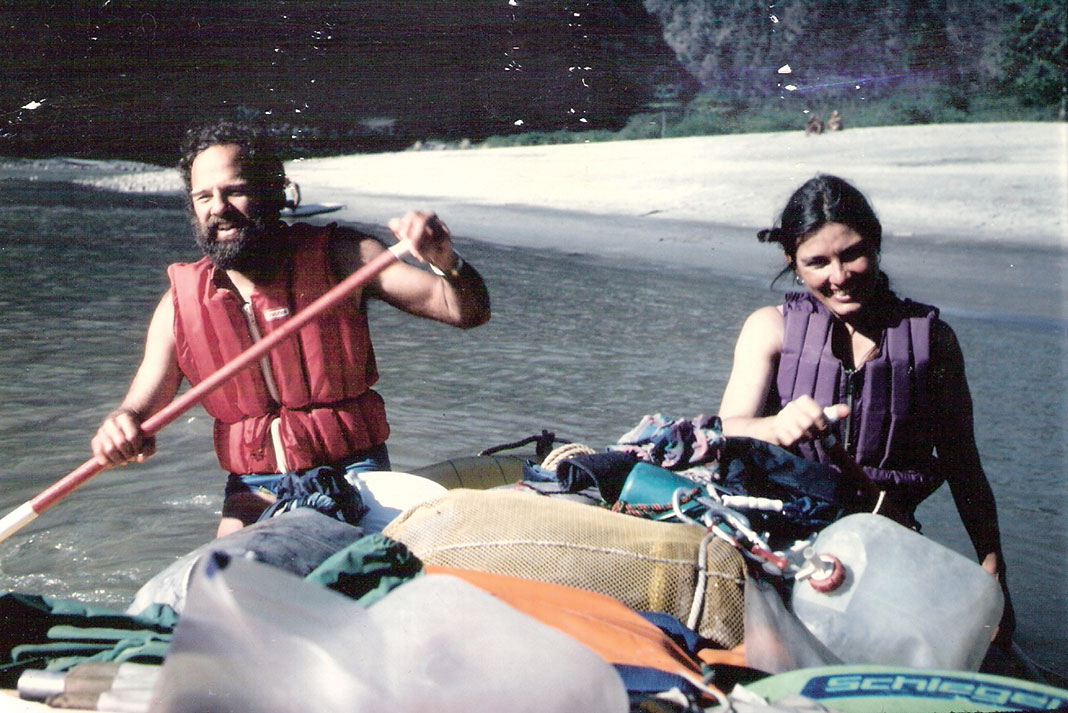
Trade Association of Paddlesports
Circa 1990–2010
TAPS remained a major organizing force in the industry until 2010, when Outdoor Retailer ended an annual subsidy that funded the show’s paddle tank and helped keep TAPS’s marquee West Coast Sea Kayak Symposium (WCSKS) afloat. In paddling’s halcyon days the yearly payout had been as much as $62,000, but as sea kayaking’s fortunes ebbed so did those of TAPS. The end of the subsidy came after several lean years for the symposium, which folded its tents in 2010 after a 26-year run. TAPS soon followed.
Professional Paddlesports Association
Circa 1979–2007
The Professional Paddlesports Association (PPA) organized a number of ambitious programs including the Certified Paddlesports Professional program, a Whitewater Courses and Parks conference series, and the National School for Paddlesports Business. It even launched its own liability insurance fund after an insurance crisis stranded many outfitters without coverage. Born in 1979 as the National Association of Canoe Liveries and Outfitters, the PPA attempted a merger with TAPS in 2006. After talks fell through in the eleventh hour, however, TAPS went its separate way and the PPA rebranded as the Paddlesports Industry Association (PIA).
Paddlesports Industry Association
Circa 2007–2010
The PIA came strong out of the gate, organizing as a 501(c)(6) trade association and rallying the support of major brands. The organization helped establish voluntary manufacturing standards for canoes and kayaks and launched the Let’s Go Paddle marketing program, but with its brand support and influence waning the PIA faded into obscurity, leaving America Outdoors to quietly pick up the pieces.
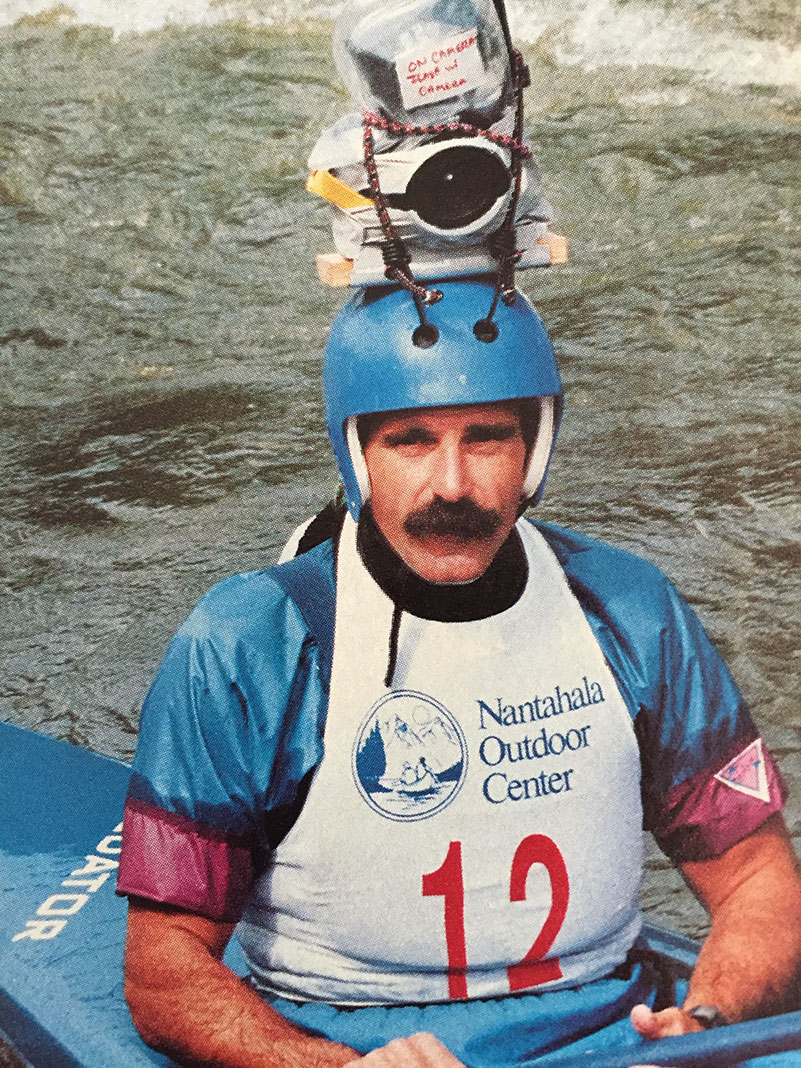
The Outdoor Industry Association Paddle Advisory Council
Circa 2010–2015
Like many paddlesports industry groups through the years, the Paddle Advisory Council (PAC) was closely intertwined with a trade show—or in this case, a trade show that never was. At the 2009 Outdoor Retailer show, Canoe & Kayak magazine announced plans for a new paddling-specific show, prompting a group of industry movers to quash the proposal like a bug on the Salt Palace floor. The brouhaha led to the formation of the PAC, a steering committee of the OIA that benefited from the leadership of heavyweight members including Sue Rechner and Joe Pulliam. When they left the industry in the mid-2010s, so did the Council.
Paddlesports Trade Coalition (Part I)
2017
Another trade show announcement galvanized the formation of the first Paddlesports Trade Coalition in 2017. This time it was the announcement in 2016 that Outdoor Retailer would move its Summer Market show dates from August to June. The paddlesports industry took that as a clear signal it was time to move on, and the Paddlesports Retailer (PSR) show launched in 2017 with a new Paddlesports Trade Coalition (PTC) seemingly joined at the hip. On paper it was a win-win plan—a booth tax at PSR would help fund the trade group, which in turn would rally the industry to the show—but the PTC was never formally organized during PSR’s three-year run, and Covid put it into a deep sleep.
Paddlesports Trade Coalition (Part II)
2023
In January 2023, leaders from 30 paddlesports brands gathered for a summit in Bentonville, Arkansas. Starting a new national trade group wasn’t on the agenda, but momentum grew and at the end of the meeting participants voted unanimously to form a new Paddlesports Trade Coalition. Organizers have since incorporated as a 501(c)(6) trade association, drafted bylaws and started planning the next step: A larger meeting of brands, retailers and outfitters next January in Bentonville.
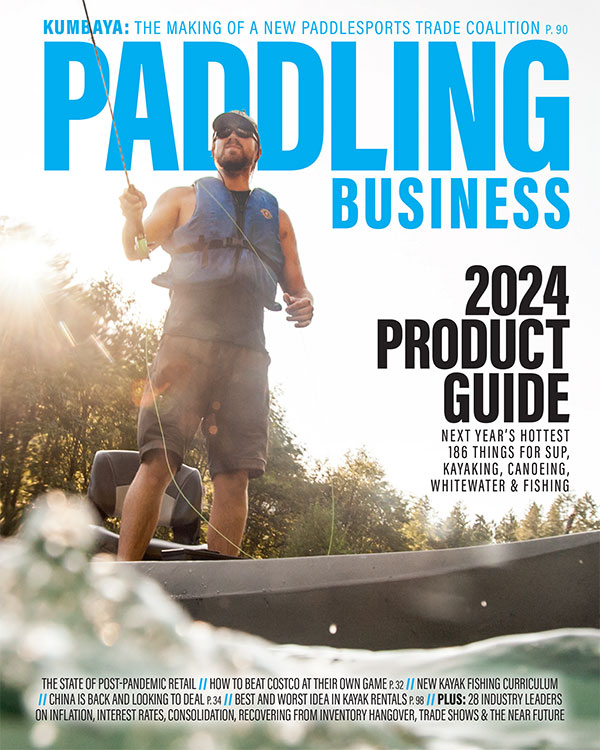
READ IT NOW »
Forty-two leaders from 30 brands attended the Bentonville summit in January 2023. | Feature photo: Visit Bentonville


